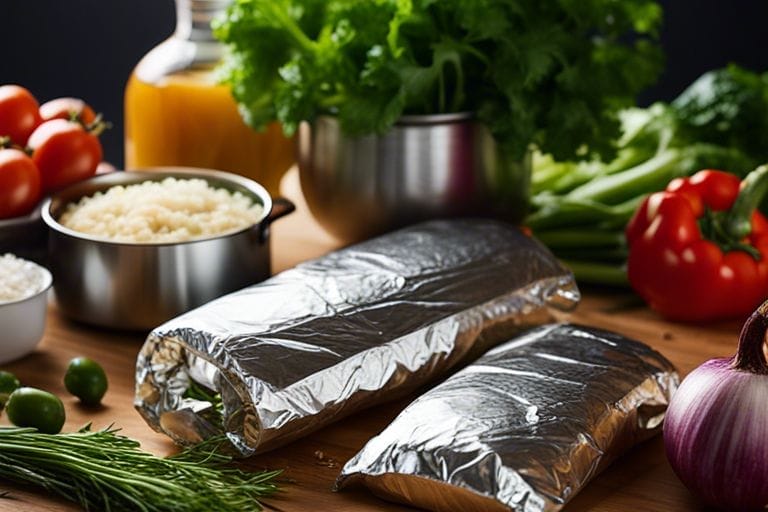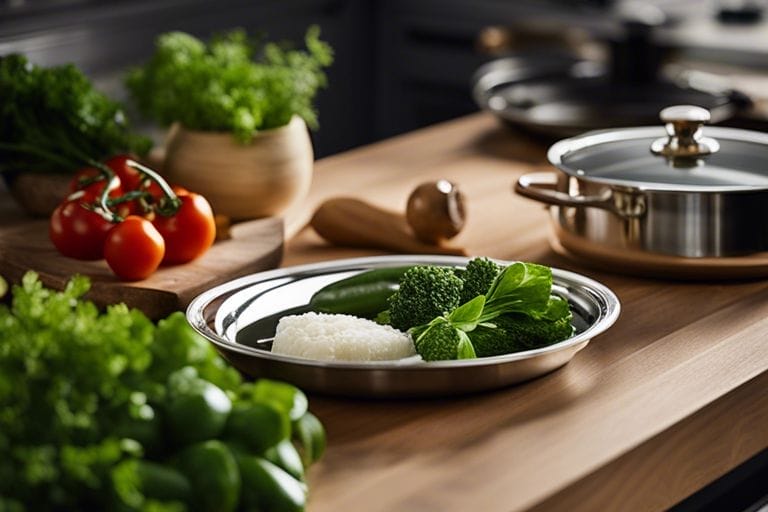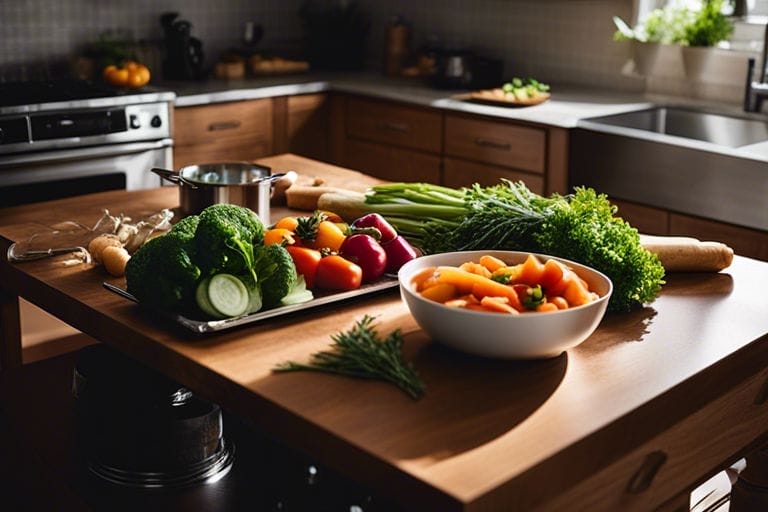Are you someone who loves to use tinfoil in your cooking, but have concerns about its safety? If so, you’re not alone. Many people use tinfoil in their cooking, but there are important factors to consider when it comes to tinfoil safety. While tinfoil can be a convenient and versatile tool in the kitchen, there are potential risks and dangers that you need to be aware of. In this blog post, we’ll explore the potential dangers of cooking with tinfoil, as well as the steps you can take to ensure that you are using it safely. We’ll also discuss the benefits of cooking with tinfoil, so you can make an informed decision about whether or not it’s right for you. By the end of this post, you’ll have a better understanding of tinfoil safety and be equipped to make the best choices for you and your cooking.
Key Takeaways:
- Use caution when cooking with tinfoil: While tinfoil can be convenient for cooking and grilling, it is important to be aware of potential health risks associated with its use.
- Avoid acidic or salty foods: Foods that are high in acidity or salt content can cause aluminum to leach into the food, so it is best to avoid cooking these types of foods with tinfoil.
- Consider alternative cooking methods: To minimize potential health risks, consider using parchment paper or aluminum foil lined with parchment paper instead of tinfoil for cooking and grilling.
Understanding Tinfoil
Some people use tinfoil in their everyday cooking, but it’s important to understand the safety and risks associated with using this material. In this chapter, you’ll gain a deeper understanding of tinfoil and its properties, as well as its historical use in cooking and food preservation.
Composition and Properties of Tinfoil
Tinfoil is actually made of aluminum, not tin. It is a thin metal sheet that is malleable and can withstand high heat. Aluminum itself is a great conductor of heat, which makes it popular for wrapping and cooking food. However, when in direct contact with acidic or salty foods, aluminum can leach into your food, which can be harmful to your health. It’s important to be mindful of the types of foods you are cooking or storing in tinfoil to avoid potential health risks.
Historical Use in Cooking and Food Preservation
Historically, tinfoil has been used for cooking and food preservation for decades. Its ability to wrap and seal food, as well as conduct heat, made it a popular choice for many household cooks. However, as we’ve learned more about the potential risks of aluminum leaching into food, many people are now seeking alternative, safer methods for cooking and storing their food. It’s essential to understand the historical context of tinfoil use and how it has evolved in today’s modern kitchen.

Health Concerns Associated with Tinfoil
If you have ever wondered about the safety of using tinfoil in your cooking, you are not alone. Many people have concerns about the potential health risks associated with this common kitchen staple. With conflicting information available on the topic, it can be challenging to navigate the safety concerns related to cooking with tinfoil. In this chapter, we will explore the health concerns associated with tinfoil and provide you with the information you need to make informed decisions about using it in your kitchen.
Chemical Leaching and Exposure
When it comes to the safety of cooking with tinfoil, one of the primary concerns is the potential for chemical leaching and exposure. Tinfoil is made from aluminum, which has the potential to leach into your food, especially when exposed to high temperatures or acidic ingredients. Some studies have suggested that prolonged exposure to high levels of aluminum may be harmful to your health, potentially contributing to certain health conditions. If you want to delve deeper into the topic of tinfoil safety and explore different perspectives, you can visit Is tinfoil safe? : r/SwitchPirates for further discussion.
Impact of Heat and Food Interaction
Another consideration related to the use of tinfoil in cooking is the impact of heat and food interaction. When you use tinfoil to cook or store food, certain chemical reactions can occur, especially when it comes into contact with acidic or salty foods. These reactions can result in the transfer of aluminum to your food. It is important to note that the amount of aluminum that leaches into your food can vary depending on factors such as cooking time, temperature, and the specific food being prepared. Being mindful of these factors can help you reduce your exposure to aluminum when using tinfoil in your cooking.
Safe Usage of Tinfoil in Cooking
Despite some concerns about the safety of cooking with tinfoil, when used properly it can be a convenient and effective tool in your kitchen. According to a report by Clean Eating Magazine, the use of aluminum foil in cooking is generally safe, provided that it is not coming into direct contact with acidic foods or high heat for extended periods.
Best Practices for Tinfoil Use
When using tinfoil in cooking, you should be mindful of a few key best practices to ensure your safety. Always avoid using tinfoil when cooking highly acidic or salty foods, as these can cause the aluminum to leach into your meal. Additionally, make sure not to use tinfoil to store leftovers or wrap food for reheating in the microwave, as this can cause sparks and potential damage to your appliance. Properly ventilate your grill or oven when using tinfoil to prevent the buildup of dangerous carbon monoxide gas. Lastly, do not allow tinfoil to come into direct contact with open flames, as this can be a fire hazard.
Alternatives to Tinfoil for Health-Conscious Cooks
If you are looking for alternatives to tinfoil for health-conscious cooking, you may consider using parchment paper, silicone baking mats, or glass or ceramic bakeware. These options can provide a safe and effective way to cook and store your food without the potential risks associated with tinfoil. While tinfoil can still be a useful tool in your kitchen, considering these alternatives for certain cooking tasks can help minimize any potential health concerns associated with tinfoil use.
Addressing Common Myths and Misconceptions
Your concerns about the safety of cooking with tinfoil are valid, as there are many myths and misconceptions surrounding this topic. Let’s address these myths and provide you with accurate information so you can make an informed decision about using tinfoil in your cooking.
Separating Fact from Fiction
One of the common misconceptions about cooking with tinfoil is that it can lead to aluminum leaching into your food, posing a health risk. However, the actual amount of aluminum that leaches into food during cooking is minimal and does not pose a significant health risk. In fact, the World Health Organization has stated that the intake of aluminum from cooking with aluminum foil is not considered to be harmful. It’s important to note that proper cooking and storage practices can significantly reduce any potential risks associated with aluminum leaching.
Review of Scientific Studies on Tinfoil Safety
Several scientific studies have been conducted to evaluate the safety of using tinfoil in cooking. Overall, these studies have found that when used appropriately, cooking with tinfoil is considered to be safe. However, it’s important to follow recommended guidelines, such as avoiding the use of tinfoil with acidic or salty foods, and not allowing tinfoil to come into direct contact with open flames. Additionally, it’s essential to avoid using damaged or overly creased tinfoil, as this can increase the risk of aluminum leaching into food.

Is Cooking with Tinfoil Safe? Navigating Tinfoil Safety
Conclusively, cooking with tinfoil can be safe if done properly. However, it is important to be mindful of how you use tinfoil and follow safety guidelines. Avoid using tinfoil with highly acidic or salty foods, and always make sure the shiny side is facing inwards when cooking. Additionally, be cautious of overheating tinfoil or using it in direct contact with open flames. By being aware of these safety measures, you can continue to enjoy the convenience of cooking with tinfoil while minimizing any potential risks to your health.
FAQ – Is Cooking with Tinfoil Safe? Navigating Tinfoil Safety
Q: Is it safe to cook with tinfoil?
A: Cooking with tinfoil is generally safe for most foods. However, acidic foods such as tomatoes, citrus fruits, and vinegar can react with the aluminum in the foil, leading to the metal leaching into the food. To minimize this risk, it’s best to use tinfoil for foods that are pH neutral or slightly alkaline.
Q: Are there any health risks associated with cooking with tinfoil?
A: Prolonged exposure to high levels of aluminum can potentially pose health risks, such as neurotoxicity and an increased risk of certain diseases. While cooking with tinfoil occasionally is unlikely to cause harm, it’s advisable to avoid using it for high-acid and high-salt foods, and to use alternative cookware such as parchment paper or silicone baking mats when possible.
Q: How can I minimize the risks of cooking with tinfoil?
A: To minimize potential risks, you can take several precautions when cooking with tinfoil. Avoid using tinfoil with acidic and salty foods, and instead opt for other non-reactive cookware. When using tinfoil, avoid cooking at high temperatures and using it to store or cover foods for extended periods. Additionally, consider using tinfoil alternatives such as parchment paper or glass containers for cooking and storing food.

